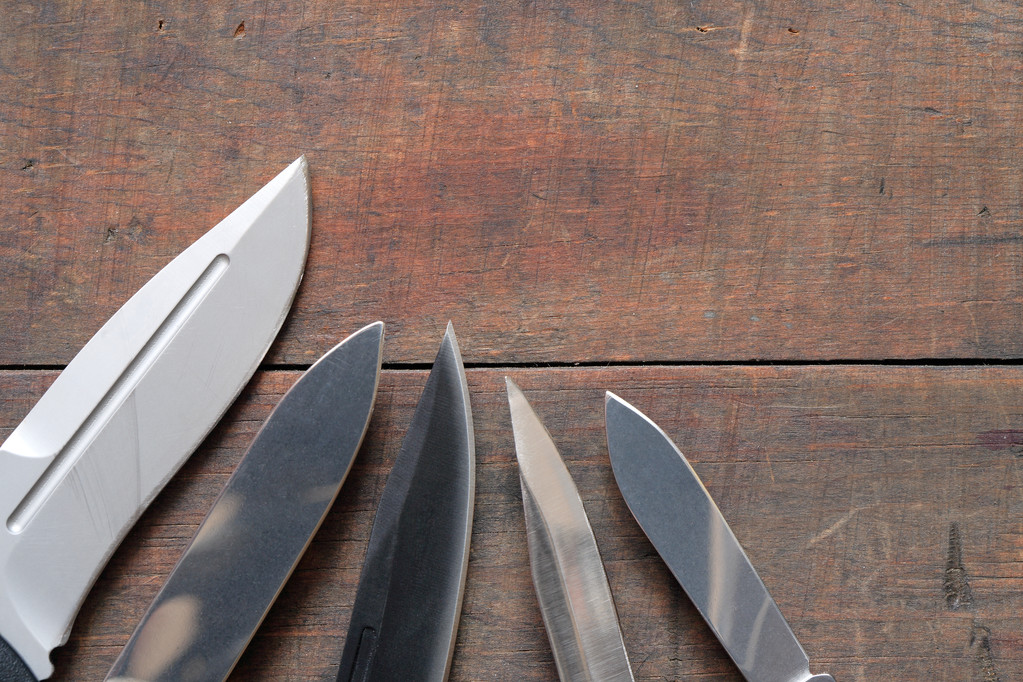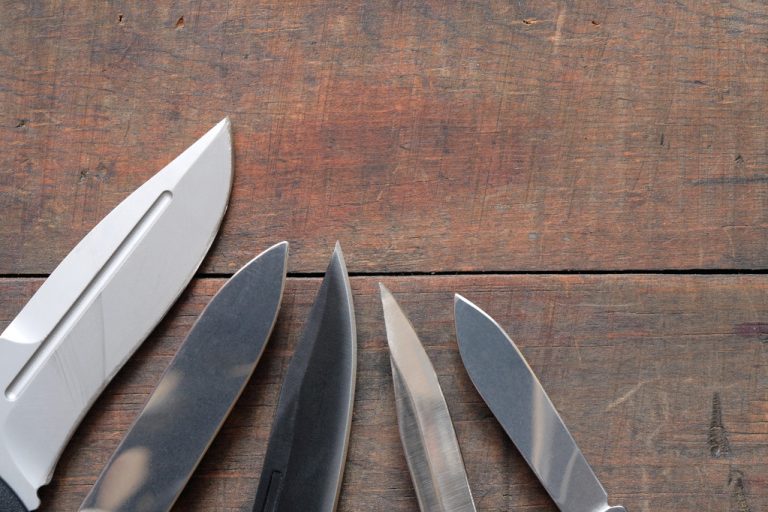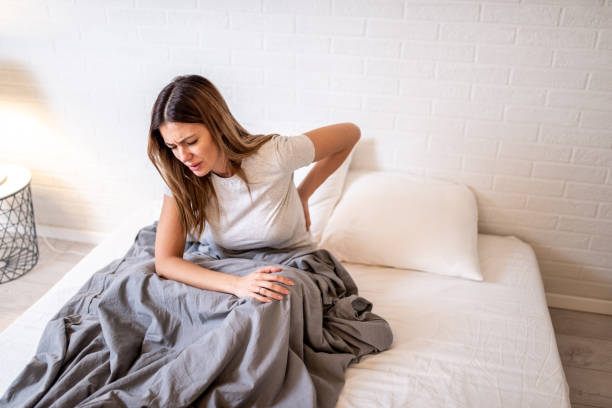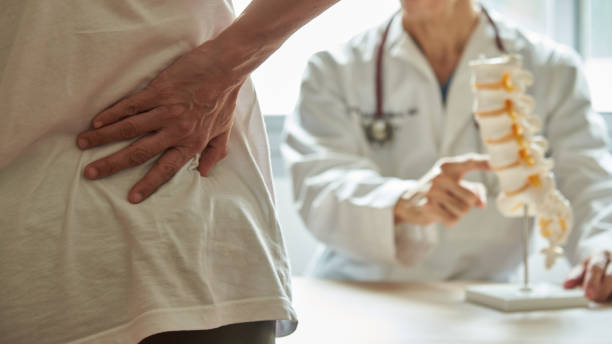Cooking is simply more fun with a sharp knife. But how do you properly sharpen your knives? We’ll tell you.

Why do knives become dull?
Blunt knives should always be sharpened. But how does it even come about? The wrong cutting technique, a surface that is too hard or cleaning in the dishwasher are absolute no-go’s when dealing with knives. Do you already feel caught? We show you five mistakes that you should avoid in the future. Because, as is so often the case, prevention is the be-all and end-all.
If your cutting boards are made of marble, glass or stainless steel, i.e. very hard materials, these increase material wear. The harder the surface, the quicker your knife will become blunt. Wooden or plastic boards are better suited.
The wrong material to be cut, i.e. very hard food such as frozen products and bones, will damage your knife. It is best to use a kitchen cleaver for such purposes.
The wrong cutting technique also leads to accelerated blunting. High-quality kitchen knives should not be used for chopping. Instead, try to use loose and smooth cutting movements.
Stay away from the dishwasher! Improper cleaning can also damage your knife. Knives don’t handle the heat and harsh chemicals well at all. Instead, you should wash your cutting tool by hand with a mild detergent immediately after use. But you shouldn’t wait too long with it, because if the knife is left in the wet for too long, there is a risk of rusting.
Incorrect storage can also shorten the life of kitchen knives. They are best stored separately or in a knife block.
Sharpen knives at home – can I do that?
Sharpening takes practice because doing it wrong can ruin knives. Not all types of sharpening are equally suitable for beginners. If you have little or no experience, you should use a grinding machine, as it is relatively easy to use. Grinding on a whetstone delivers a particularly precise result, but this requires practice. As is well known, no master has fallen from the sky and that also applies to knife sharpening. You can definitely learn it if you are not completely untalented with your hands and you will be able to see learning progress after a short time. However, if you have two left hands or simply don’t have the time to sharpen your knives yourself, you can alternatively have this task done by professionals. Sharpening services are becoming increasingly rare these days, but if you have found a grinder, you can also have scissors, tools and garden equipment repaired there.
Sharpen knives – whetstone or sharpening steel?
Grinding with the sharpening steel
Sharpening steels are more suitable for maintaining sharpness than for actual sharpening. With them you can get your knife ready for use again quickly, but they cannot replace a basic sharpening of the blade. A basic distinction is made between two types of sharpening steels – the exciting and the straightening. Exciting sharpening steels made of ceramic or diamond remove some material from the cutting edge and thus ensure roughness. However, these sharpening steels bring only short-term success. If you want to keep your blade sharp for a long time, you should use a sharpening steel made of metal. No matter which sharpening steel you have chosen, you should make sure that it is harder than the knife to be sharpened.
When sharpening with the sharpening steel, make sure to maintain the correct cutting angle, i.e. the angle between the blade and the steel, of 15-20 degrees. The speed at which you carry out the sharpening movements is entirely up to you, just make sure that you guide the entire cutting edge along the sharpening steel. If you have aligned the angle correctly, you can now start the sharpening process. To do this, pull the knife down along the steel and repeat this on the back to sharpen the blade from both sides. You can repeat this process five to ten times, depending on the sharpness you want.
Sharpen with the whetstone
If your knives don’t cut ideally despite using a sharpening steel, you have to find another solution. The most well-known way to sharpen a knife is also the best way – for a great result with a whetstone you can get your knives particularly sharp again. This is also very flexible, because there are different stones for each grinding phase, from coarse to very fine. A sharpening stone* not only ensures a long service life for your knives, you can even use it to sharpen the knives thinly.
However, a sharpening stone also has disadvantages. On the one hand, a perfect result takes time and, on the other hand, sharpening with a whetstone requires a high degree of skill. If you change the angle even slightly during the process, it can destroy the result. For passionate grinders, however, there is no way around the grindstone. For beginners, it is advisable to use a knife sharpener guide*, which helps to keep the angle. Some sharpening stone sets* already have the guide included.
Sharpening stones differ in their grit: the higher the grit, the finer and sharper the result. With a little practice and a fine grit, you can achieve razor-sharp results. For knives that have been sharpened a lot, the so-called “thinning out” of the knife is also recommended. This will adjust the sides, which are becoming thicker and thicker as a result of the sharpening, and you will immediately enjoy your knife more. When choosing the grit of your sharpening stone, you should be guided by the degree of wear and tear of your knife. To sharpen very worn and blunt cutting tools, choose a coarse grit of 200 to 400. For normally worn knives, a grit of 800 to 1000 is recommended. If you want to fine-tune your blades or polish them, a grit of 3000 or advised from 6000.
When it comes to whetstones, a distinction is also made between water stones and oil stones, with the respective liquids forming a film on the surface. This not only reduces friction, it also prevents particles from getting stuck in it. To soak the water stones, place them in a water bath for about 15 minutes. You can tell whether they are ready for use when no more air bubbles rise. The stone must also be kept moist during sharpening, because only then can the necessary grinding sludge form, which sharpens the blades gently and at the same time very intensively.
More ways to sharpen your knives
Sharpening rods for quick sharpening
Sharpening rods are suitable for anyone who wants to keep their knife sharp. With a quick grip on the sharpening rod* you can keep your knives sharp and save yourself the hassle of sharpening with a whetstone etc. However, the sharpening rods are not suitable for sharpening knives that are already blunt or thinning knives. That’s why you should pay attention to regular grinding.
Pull-through grinder for everyday knives
Pull-through grinders* are probably the easiest way to sharpen your knives. They are very easy to use: just insert the knife, pull it out and you’re done. Repeat this process a few times depending on how hot you are. However, these sharpeners are only suitable for everyday knives. You won’t get your knives very sharp with it, since the cutting edge will always be a little frayed. The sharpness does not last long either, so regular sharpening is also recommended here. For the everyday kitchen knife, however, this is completely sufficient.
electric grinders
Electric grinders* are for those in a hurry. They are visually reminiscent of the pull-through sanders and are just as easy to use. The result of the electric grinder is definitely impressive and is even significantly better than that of the hand-operated colleagues. But: Electric grinders remove more material than e.g. whetstones, which can shorten the life of your knives.
Which method is suitable for which knife?
The sharpening stone, in particular the Japanese water stone, is the ideal tool for sharpening Japanese knives. If the grinding is carried out regularly and you value extreme sharpness, we recommend a grit of 1000. We speak of polishing stones from a grit of 2000 and up and can use this to sharpen the knives. The sharpness can be increased in this way, but the result is shorter than that of a basic grind.
European knives are comparatively more robust than Japanese ones. A sharpening steel is sufficient to sharpen these rather insensitive knives. This straightens the blade again and again and thus ensures a smooth and sharp cutting edge, but after a while a basic sharpening is also necessary for European knives.

Can you sharpen a knife with plates?
Not everyone has sharpening stones, machines or sharpening steels at home. With plates and cups it is of course quite different. In order to give you a material and wallet-friendly method of sharpening knives, we asked ourselves: What is the truth of the myth of using plates to get knives sharper? In fact, it works! To do this, pull the blades off the rough underside of your ceramic dishes several times. Of course, this DIY cannot replace the professional methods with whetstones and the like, but it does bring a small amount of success.












